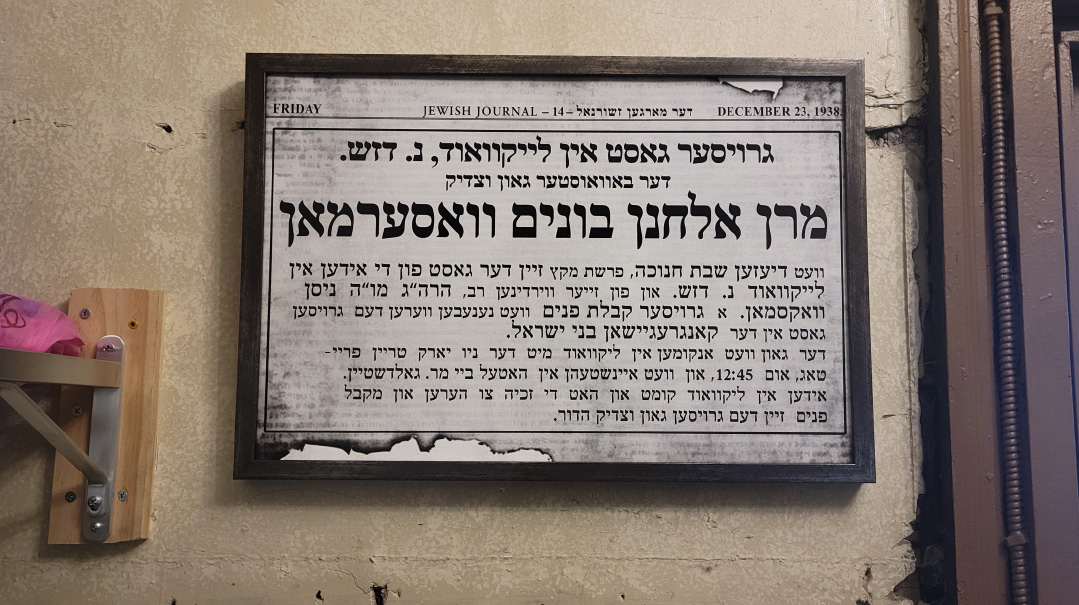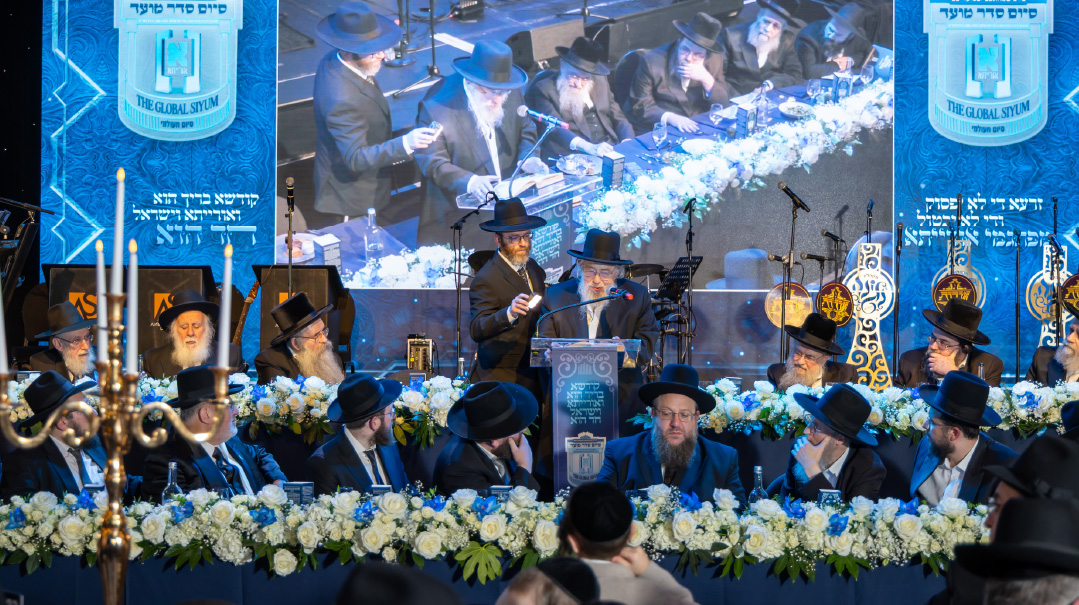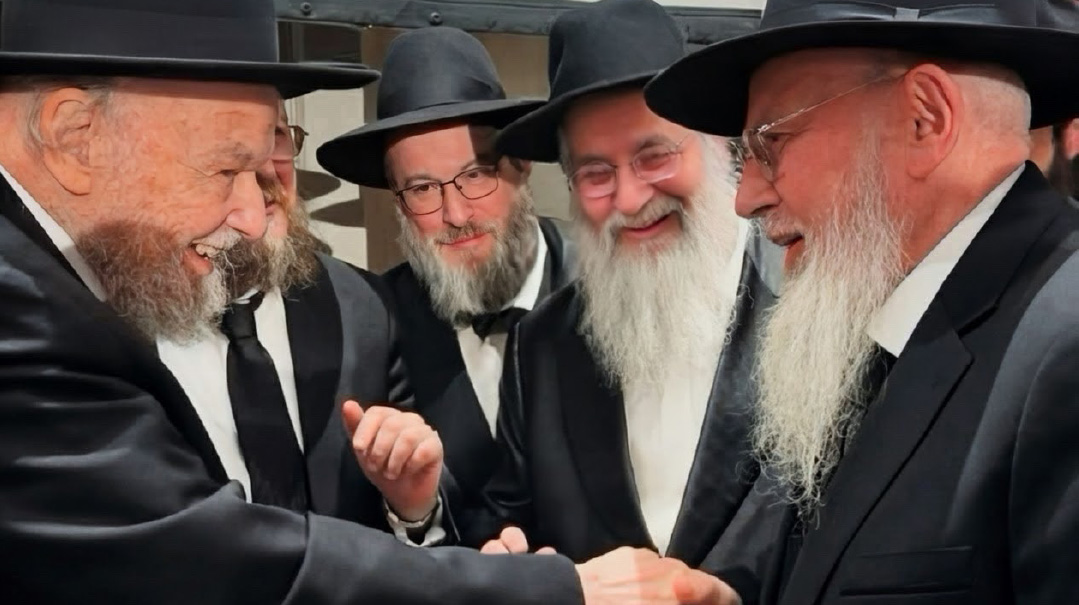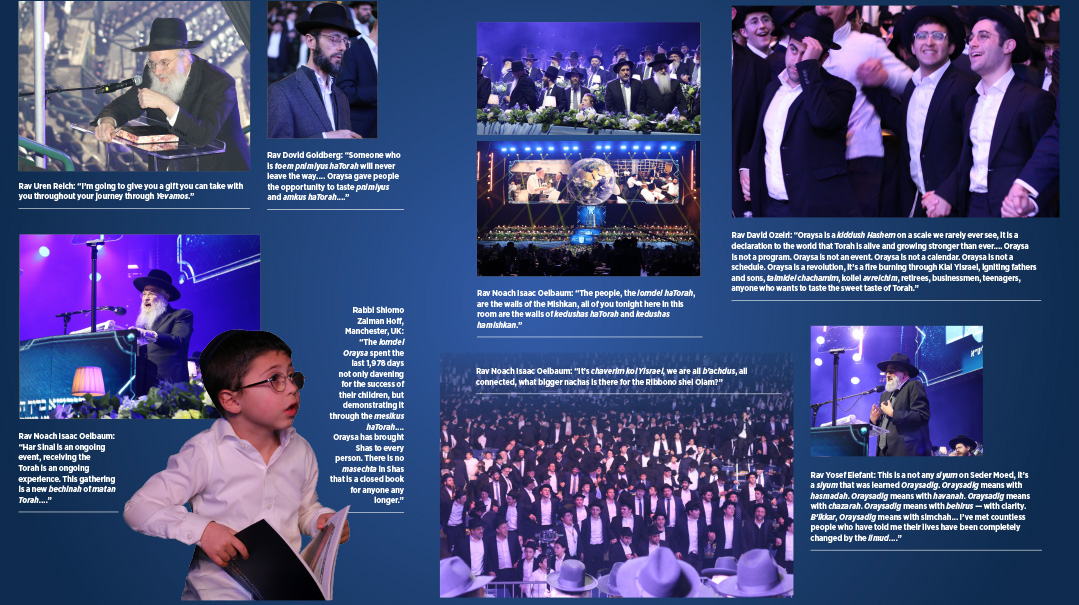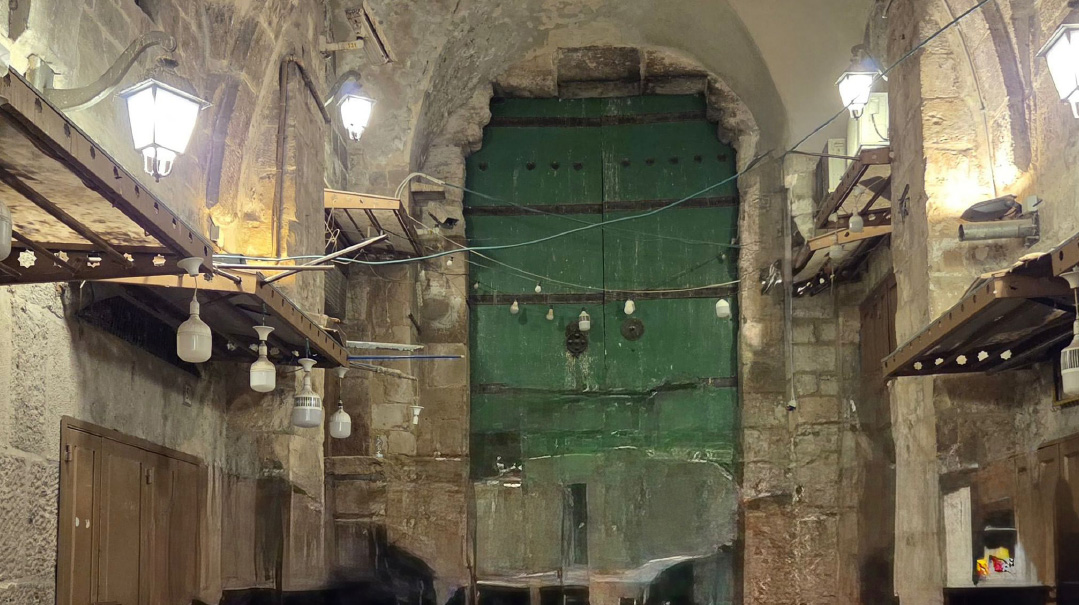The Moment: Issue 1050
| February 18, 2025“Really?” Rabbi Wagner said. “Torah’s not for you?” Motti nodded, but Rabbi Wagner would have none of it

Living Higher
R
abbi Yehoshua Feigelstein is the dynamic sixth-grade rebbi in Monsey’s Yeshiva of Spring Valley. For years, he has taught Hakones, the sixth perek in Bava Kamma, shepherding his young students through one of their first years learning Gemara.
Five years ago, Rabbi Feigelstein’s mission took a transformational pivot when he created the Torascha B’Finu program, an offshoot of the famed Vhaarev Na program, tailored to boys in sixth and seventh grade. Defined by the basic mantra of “Chazarah, chazarah, chazarah,” these middle-school aged boys study and review the same pages of Gemara over and over until they literally can quote them verbatim.
Rabbi Feigelstein has been passionately implementing his program, encouraging constant review, then standing back and watching as Torah works its magic. In an effort to raise the level of excitement and motivation, each Friday, Rabbi Feigelstein asks the boys to commit to reviewing any number of amudim, any number of times. A pile of sticky notes awaits the students upon their return on Sunday and each one takes the number of notes that correspond with the number of amudim he learned. They then hang these notes on posters affixed to the wall.
For the past three years, Rabbi Feigelstein added an additional element to the thrill. When the collective amount of amudim the boys have learned nears 5,442, the total number of amudim in Shas, he auctions off the privilege to post this symbolic sticky note to the poster, the currency, of course, being hours of Torah study.
This year, a group of four boys joined together to commit to 30 hours of review and won the bid. They were offered the choice between taking the honor of posting the sticky note themselves or offering it to someone else, and they chose to pass it on.
The lucky recipient was Motti Sigal.
Motti is a talented vocalist from Monsey, who, along with a group of fellow singers, had been hired to sing at a shabbaton held for roshei chaburah of Kinyan Hamasechta (a program just like Vhaarev Na and Torascha B’finu, but geared toward adults). After a Shabbos where the message of Torah’s primacy was shared, reiterated, and celebrated, he felt something stirring within.
As a child, he had struggled mightily in school and had long since resigned himself that learning was just not for him. But now, he began to wonder.
He approached Rabbi Yitzchak Wagner, the nasi of Kinyan Hamasechta, and shared his experience.
“Really?” Rabbi Wagner said. “Torah’s not for you?” Motti nodded, but Rabbi Wagner would have none of it.
“Come,” he said, “we’re going to learn.” Together, they began to learn Maseches Tamid, an experience that Motti described as feeling like he was breathing for the first time after being on a ventilator for many years.
As both men lived in Monsey, they decided to continue the chavrusashaft, and today, Motti has mastered Maseches Tamid and has moved on to his next masechta.
A video of the story had been posted on the Kinyan Hamasechta website, and when Rabbi Feigelstein shared it with his students, they were inspired.
“We want Motti to post the sticky note,” they said.
Rabbi Feigelstein reached out to Motti who was more than happy to comply.
The YSV boys posed for a photo with the chassidish vocalist, celebrating their milestone and the mastery in Torah they’d learned was attainable to every single Yid.
Overheard
“I left three things in Gaza. My left leg, my right one, and my sinat chinam!”
—Shai Graucher, quoting IDF solider Elisha Meidan, who heroically fought in Gaza. Shai was one of the guest speakers at the ArtScroll/Mesorah Heritage Foundation retreat last weekend, where he shared this message of unfathomable strength, endurance, and ahavas Yisrael.
Fruits of Gratitude
For months, Klal Yisrael has been davening for the refuah sheleimah of Paysach Yosef ben Hinda, Rabbi Paysach Krohn, who has spent decades inspiring hundreds of thousands of Jews throughout the globe. While he is steadily regaining his strength, he still hasn’t been able to return to his shul, Khal Adas Yereim of Kew Gardens, where he’s been a mispallel since 1952. This past week, the shul reached out and asked if he would be able to join their annual Tu B’Shevat mesibah and honor the participants with a few words.
It wasn’t easy but Rabbi Krohn consented. As he entered the shul for the first time in months, all present leaped to their feet and burst into a loud chorus of “Chasdei Hashem ki lo samnu,” offering a song of thanks to Hashem for healing a man to whom they all held so much gratitude.
And Rabbi Krohn, in turn, continued the theme of gratitude. He spoke about his decades-long shul membership, and how, when his father had moved to Queens, he was told by his cousin, Reb Elimelech Tress z”l, that he should daven at Khal Adas Yereim as its rav, Reb Yaakov Teitelbaum, is the “Chofetz Chaim of the generation.”
When the time came, Rav Yaakov’s son, Rav Shlomo Teitelbaum, became the shul’s rav, and today it’s led by Rav Avraham Moshe Chaim Wolpin, the oldest son-in-law of Rav Shlomo.
It was in this shul where Rabbi Krohn learned to daven from the amud, and where he leads the tzibbur each Rosh Hashanah and Yom Kippur.
It was in this shul where he ran Pirchei together with the legendary Rabbi Eli Teitelbaum.
It was in this shul where the roots of what would become one of our People’s most inspiring trees was planted.
And now he was back to share more inspiration on this Tu B’Shevat night, and the feelings of gratitude flowed like milk and honey.
(Originally featured in Mishpacha, Issue 1050)
Oops! We could not locate your form.


